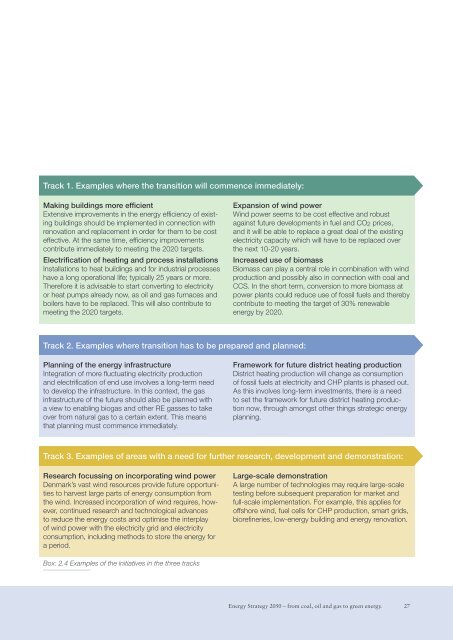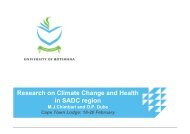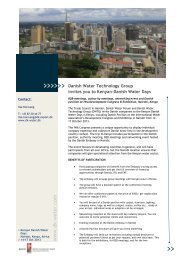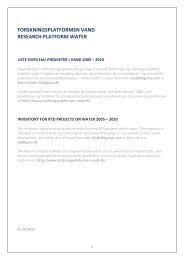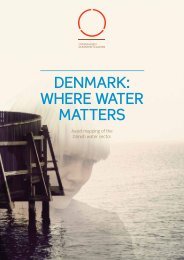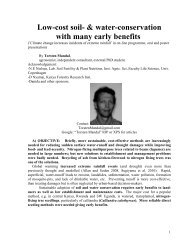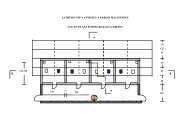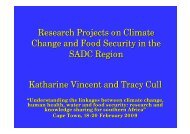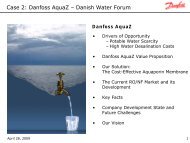energy strategy 2050 - Energy Europe
energy strategy 2050 - Energy Europe
energy strategy 2050 - Energy Europe
Create successful ePaper yourself
Turn your PDF publications into a flip-book with our unique Google optimized e-Paper software.
Track 1. Examples where the transition will commence immediately:<br />
Making buildings more efficient<br />
Extensive improvements in the <strong>energy</strong> efficiency of existing<br />
buildings should be implemented in connection with<br />
renovation and replacement in order for them to be cost<br />
effective. At the same time, efficiency improvements<br />
contribute immediately to meeting the 2020 targets.<br />
Electrification of heating and process installations<br />
Installations to heat buildings and for industrial processes<br />
have a long operational life; typically 25 years or more.<br />
Therefore it is advisable to start converting to electricity<br />
or heat pumps already now, as oil and gas furnaces and<br />
boilers have to be replaced. This will also contribute to<br />
meeting the 2020 targets.<br />
Expansion of wind power<br />
Wind power seems to be cost effective and robust<br />
against future developments in fuel and CO2 prices,<br />
and it will be able to replace a great deal of the existing<br />
electricity capacity which will have to be replaced over<br />
the next 10-20 years.<br />
Increased use of biomass<br />
Biomass can play a central role in combination with wind<br />
production and possibly also in connection with coal and<br />
CCS. In the short term, conversion to more biomass at<br />
power plants could reduce use of fossil fuels and thereby<br />
contribute to meeting the target of 30% renewable<br />
<strong>energy</strong> by 2020.<br />
Track 2. Examples where transition has to be prepared and planned:<br />
Planning of the <strong>energy</strong> infrastructure<br />
Integration of more fluctuating electricity production<br />
and electrification of end use involves a long-term need<br />
to develop the infrastructure. In this context, the gas<br />
infrastructure of the future should also be planned with<br />
a view to enabling biogas and other RE gasses to take<br />
over from natural gas to a certain extent. This means<br />
that planning must commence immediately.<br />
Framework for future district heating production<br />
District heating production will change as consumption<br />
of fossil fuels at electricity and CHP plants is phased out.<br />
As this involves long-term investments, there is a need<br />
to set the framework for future district heating production<br />
now, through amongst other things strategic <strong>energy</strong><br />
planning.<br />
Track 3. Examples of areas with a need for further research, development and demonstration:<br />
Research focussing on incorporating wind power<br />
Denmark’s vast wind resources provide future opportunities<br />
to harvest large parts of <strong>energy</strong> consumption from<br />
the wind. Increased incorporation of wind requires, however,<br />
continued research and technological advances<br />
to reduce the <strong>energy</strong> costs and optimise the interplay<br />
of wind power with the electricity grid and electricity<br />
consumption, including methods to store the <strong>energy</strong> for<br />
a period.<br />
Large-scale demonstration<br />
A large number of technologies may require large-scale<br />
testing before subsequent preparation for market and<br />
full-scale implementation. For example, this applies for<br />
offshore wind, fuel cells for CHP production, smart grids,<br />
biorefineries, low-<strong>energy</strong> building and <strong>energy</strong> renovation.<br />
Box: 2.4 Examples of the initiatives in the three tracks<br />
<strong>Energy</strong> Strategy <strong>2050</strong> – from coal, oil and gas to green <strong>energy</strong>.<br />
27


